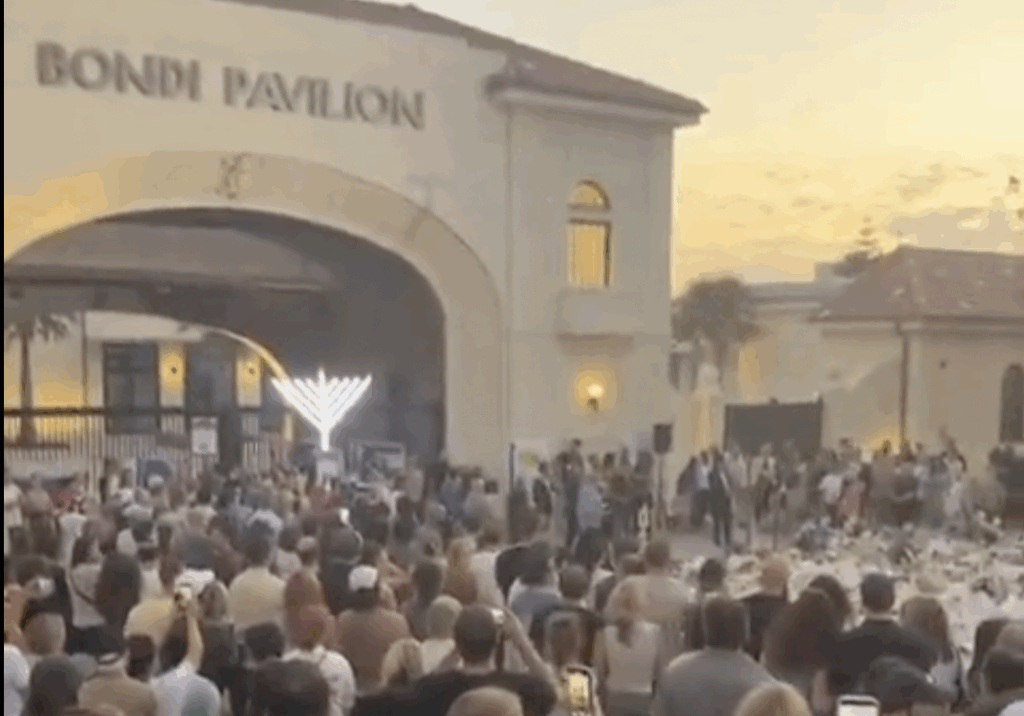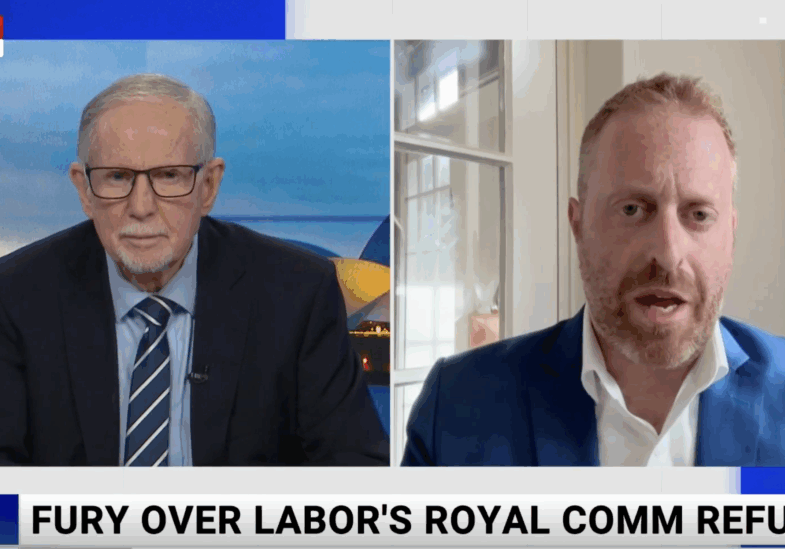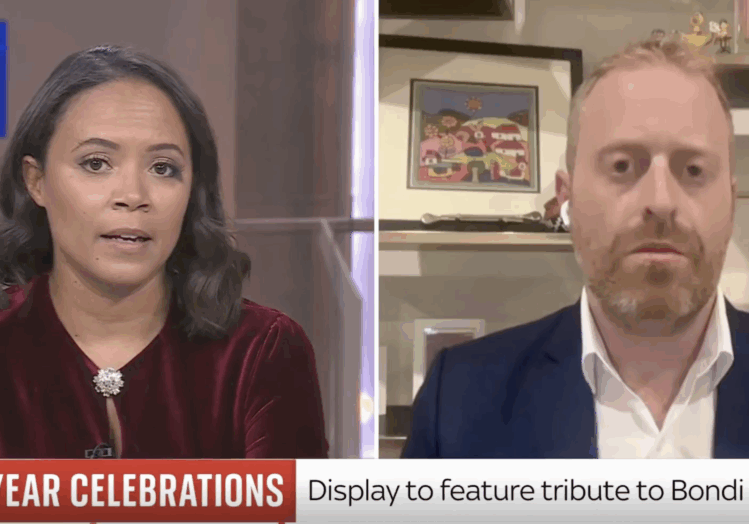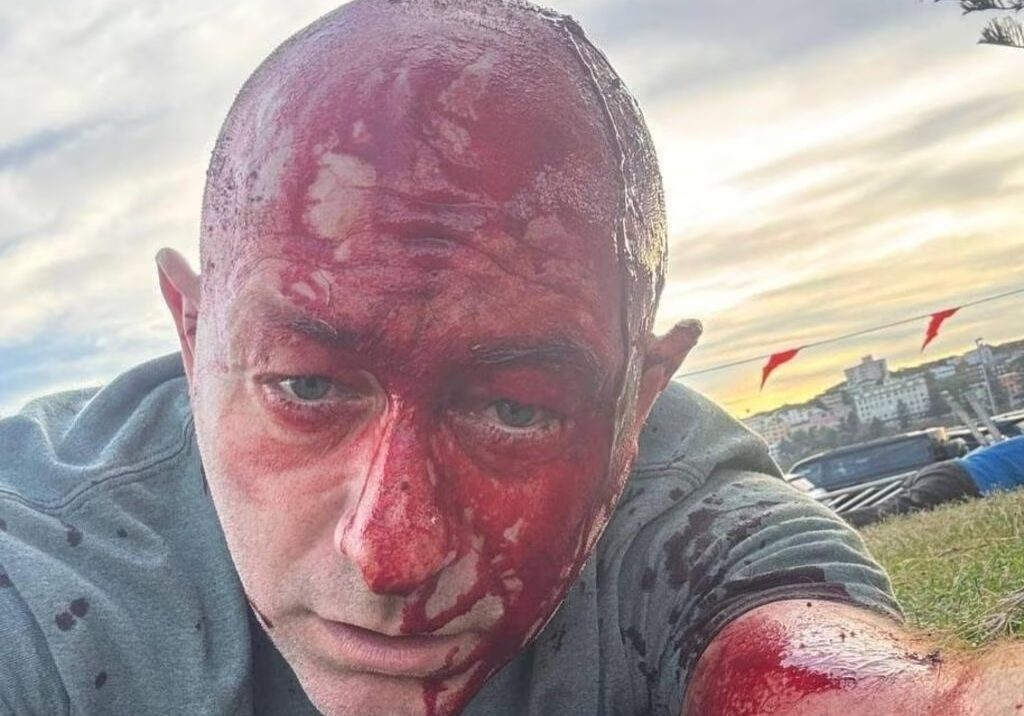Australia/Israel Review
Hebron Diary
Oct 31, 2014 | Ahron Shapiro

A misguided tour
Ahron Shapiro
“Excuse me, looking for a guide?” While standing in the plaza outside of Hebron’s Cave of the Patriarchs – the burial place of Judaism’s great patriarchs and matriarchs and its second holiest site, I was approached by a Palestinian man in his early twenties, waving a brochure.
I wasn’t really looking for a guide – I had come to the city to independently review the situation and compare it to some of the recent reports I had seen in Australian media.
But I decided to accept his offer when I saw his brochure was not a guide into Hebron’s historical sites but rather a fold-out map and template for an anti-settler tour devised by the left-wing Israeli NGO B’tselem.
I wondered what is this tour that is being marketed daily to unsuspecting tourists – including visiting journalists – and how might this be affecting Hebron’s portrayal in the media. (The situation in Hebron, which is indeed the most problematic and difficult in the West Bank, often features heavily in anti-Israel coverage in Australia.)
Even though the tour would bring me into the Palestinian-controlled H1 section of the city (as outlined by the 1997 Hebron redeployment agreement between Israel and the Palestinian Authority) and therefore beyond IDF protection I decided to be as honest with the guide as I felt I safely could be. So I showed him my press credentials, told him I wrote for a Melbourne-based publication and confided in him that I was Jewish when he asked.
Since a lot of the negative media reports from Hebron had focused on clashes between Palestinians and the IDF, I asked my guide, Mohammad, to take me to one if possible.
As fate would have it, earlier that morning two Hamas terrorists – prime suspects in the cold-blooded kidnapping and murder of three Jewish students in June – had been killed in a firefight with the IDF and there were many clashes expected that day. Mohammad readily agreed to show me one.
His plan for finding a demonstration was to weave around Israeli security checkpoints surrounding a narrow corridor of Israeli neighbourhoods. This revealed a fact that may not be apparent from televised footage of violent clashes between Palestinians and the IDF. Such clashes almost always occur directly at or in front of IDF posts themselves and not deep inside Palestinian self-rule areas.
We passed such locations where violent clashes had clearly just taken place – the remains of burning tyres were still smouldering. But now, the streets were practically deserted. Rather than uncontrolled rage, the evidence pointed to planning and orchestration.
He kept referring to the slain Hamas suspects as “martyrs”. I asked him whether Hebronites believed that the suspects had killed the Jewish students.
“No!” He emphatically replied. “The students died in a car accident.” He claimed, to my astonishment, that Israel had invented the story of a kidnapping in order to give it an excuse to pursue Hamas. Perhaps he hoped that I wasn’t aware that Hamas had claimed credit for it.
He told me that he had been helping take groups into Hebron for B’tselem and its left-wing NGO stablemate Breaking the Silence, which specialises in criticising IDF behaviour towards Palestinians as well as IDF protection of Israeli settlers in the West Bank.
Mohammad’s B’tselem-designed tour shines a spotlight on the steps the IDF implemented during the second intifada roughly a decade ago to stem the increasing number of fatal attacks on Israelis and tourists in Hebron. However, while pointing out the effects of these measures, the reasons for them are downplayed or ignored.
So, for example, when the tour points out Palestinians are restricted from accessing a certain street, or that Palestinian shops there were closed, the issue of terrorism isn’t discussed. It also isn’t mentioned that the street is a lifeline to the Jewish neighbourhoods.
What’s more, it isn’t mentioned, for example, that these neighbourhoods were built on Jewish-owned property, or that the roots of Jewish life in Hebron are some of the deepest and most ancient in existence. Nor is it discussed that 67 members of the Jewish community of Hebron were massacred by local Arabs in 1929 and the remnants forced to flee the city for the last time during the Arab riots of 1936.
Estimates from the late 19th and early 20th centuries determined Hebron’s Arab population to be up to 19,000 and set the Jewish population as high as 1,400.
In 1967, the population was estimated at 38,000 Arabs and no Jews. Today, the 20-year-old international supervisory body with the somewhat incongruous name of Temporary International Presence in Hebron (TIPH) estimates Hebron’s Palestinian population to be about 170,000, while Israel estimates around 850 Jews in Hebron itself and another 8,000 in neighbouring Kiryat Arba.Notably, while the historic Jewish community of Hebron itself tended to be more religious and Sephardic, support for Jewish continuity in the city was widespread among the Ashkenazi Labor Zionist leadership both before and after the creation of the state and the 1967 War.
On 11 June 1967, just days after Israel captured the West Bank from Jordan in a defensive war, former Prime Minister David Ben-Gurion urged the immediate resettlement of the Jewish quarter of Hebron (in addition to the Jewish Quarter of Jerusalem’s Old City and Gush Etzion).
On March 26, 1970, a Jerusalem Post story opened, “Israel dare not let Hebron remain Judenrein because of the murderous pogrom of 1929. Jews have lived in Hebron in every century, and perhaps more in Hebron than in any other towns save Jerusalem, Safed and Tiberias, Deputy Premier Yigal Allon told the Knesset yesterday.”
A Labor-led government authorised the creation of the settlement of Kiryat Arba alongside Hebron in 1972 while a Likud-led government authorised the reconstruction of the Jewish neighbourhoods inside Hebron in 1980.
It was these settlements and their impact that most distressed Mohammad.
Mohammad also complained about restrictions on Muslim access to parts of the Cave of the Patriarchs compound – restrictions he said favoured the Jews. The reality is more complex and seemingly far more balanced. It wasn’t always so.
Before 1948, Jews were prevented – first by the Turks and then, as part of the status quo, by the British – from entering the building at all. Under Israeli rule between 1967 and 1994, Jews and Muslims shared the entire space, but a fatal mass shooting of 29 Palestinians at the site by Baruch Goldstein, a deranged Jewish doctor from Kiryat Arba, prompted the decision to install doors to physically separate the site into two prayer spaces. Now, the Jews get to pray near the cenotaphs of Abraham and Sarah, Jacob and Leah, or the courtyard in between, while Muslims get exclusive access to the spacious hall containing the cenotaphs of Isaac and Rebecca (traditionally the mosque’s main hall) and the rest of the building – about 81% of the entire site.
On an equal number of specified holy days, the entire building is given over to the relevant religion.
The future of Hebron’s Jewish community and access to the Cave of the Patriarchs will be a highly contentious issue in any potential peace agreement between Israel and the Palestinians. However, in the meantime, to one-sidedly blame Israel or the Jews of Hebron for steps that were taken to protect lives from terrorism distorts the complex reality.
These were my thoughts as Mohammad took me through Hebron’s Old City and the casbah market, angrily pointing out, for example, sealed pathways heading into a Jewish neighbourhood. He did not explain why they were sealed, nor was any credence given to the notion that Jews have justifiable reasons to fear for their safety in Hebron without existing protections.
The narrow streets create a sense of confinement and have been used for ambushes and sniper attacks in the past. These include the cold-blooded murder of 10-month-old Shalhevet Pass by a Palestinian sniper in March 2001, and the November 2002 ambush of an IDF patrol that had just escorted Jewish worshippers from the Cave of the Patriarchs. That attack killed nine soldiers and three civilian security officers. In the casbah, we met a group from a European NGO that had given money to projects in Hebron. The group was being led around by a group of TIPH officials themselves. I could hear that they were being provided with practically the same one-sided briefing that Mohammad was giving me. I found this particularly disturbing, given the fact that TIPH operates under a mandate of support of both Israel and the Palestinian Authority and is supposed to act impartially.
The European group leader told me in no uncertain terms that his group’s sympathies lay with the Palestinians alone and that he hoped his visit to Hebron would further their goals.
The Palestinian grievances I heard on the tour were sincere, and I have no doubt about their unhappiness with the status quo. But in terms of working towards a resolution, I only heard interest in an outcome where all their demands are met, without room for the slightest compromise, including the expulsion of every Jew from Hebron and a return to exclusive Muslim control over the holy places.
While it was undoubtedly genuine, I sensed strongly that the friendliness and goodwill I was receiving was very much contingent on hopes that I would write a favourable, sympathetic (perhaps one-sided would be a better word) report. There was little doubt that any critical analysis on my part would have been met with suspicion if not unbridled hostility or even risk of harm.
At the root of this feeling were the foreboding overtones of my guide. As we neared the site of the promised demonstration, Mohammad warned me that video recording Palestinian violence such as rock-throwing against the IDF was not allowed, and hinted that ignoring that advice could endanger my safety.
Regardless, he promised to show me a demonstration, and he delivered.
Before us swept a Hamas funeral parade, seemingly thousands of people, including children, chanting and waving the flag of an organisation that calls for Israel’s destruction and genocide against the Jewish people right in its charter.
The procession came within a block of an IDF checkpoint. I could see a couple of Israeli Border Police in riot gear. Under attack from slingshot-armed Palestinians hurling baseball-sized stones, they lobbed a tear gas canister to keep the rock-throwers at a distance.
Rather than directly confront the protesters, the Border Policemen were taking defensive positions around the side of a building, and soon all I could see were the Palestinian stone-throwers – a mixed group of masked adults and a few teenagers – hurling stone after stone over the building after them.
“I don’t take part in protests like these,” Mohammad said to me as we watched the spectacle. “The rocks don’t do anything.”
On that I agreed. But – I could have added but didn’t – one-sided propaganda tours like the one that Mohammad conducts for B’tselem in Hebron aren’t helpful either.
Such tours claim that if only there were no Jews living in Hebron, and no Israeli presence in the West Bank, the conflict would be solved. It’s a seductive illusion, but it remains just that – an illusion.
After leaving Mohammad, I visited Hebron’s Jewish Cemetery. The gate was locked, and the code for entry required a call to the security centre that presumably monitors all the CCTV cameras in the Jewish neighbourhoods. This is due to the fact that the cemetery has been vandalised on many occasions.
In fact, the first thing one is struck by upon entering the cemetery is that the site is largely devoid of tombstones, despite it dating back to the 1300s. Once there were tombstones marking at least 4,000 Jewish graves, but during the Jordanian occupation, the stones were stolen, graves desecrated and the field turned over to agriculture.
Part of the cemetery has been restored, including a section containing the ancient graves of Jewish sages and another containing a mass grave for the victims of the 1929 massacre.
Since the 1967 war, a steady number of Jews have opted to be buried there. I paused at the foot of the freshest grave that of Major Benaya Sarel from Kiryat Arba, who was killed in this summer’s Gaza War just two weeks before his wedding date.
I lingered to read the tombstones of those massacred in 1929. Men, women and children, religious or secular, Zionist or anti-Zionist – it didn’t matter to the mobs that broke down doors to slaughter their Jewish neighbours in their homes 19 years before the establishment of the State of Israel.
It was a solemn reminder that in Hebron, as elsewhere in the West Bank, the real obstacles to peace can’t be reduced to the presence of Jews here or a settlement there.
Tags:






